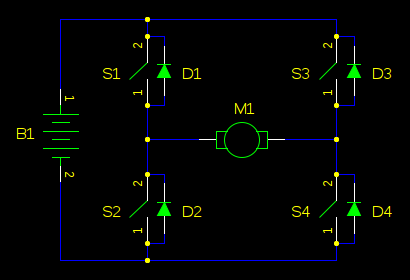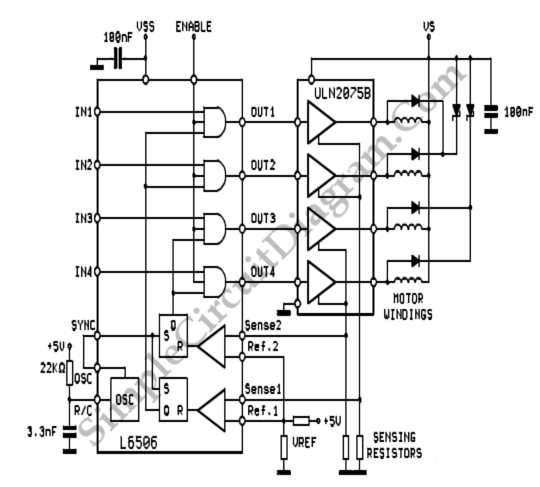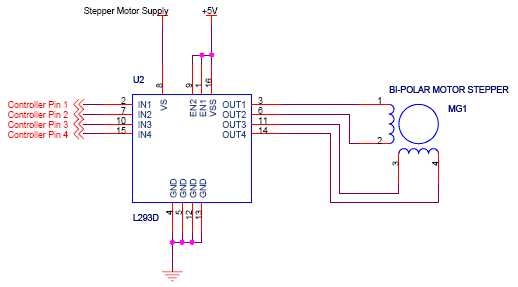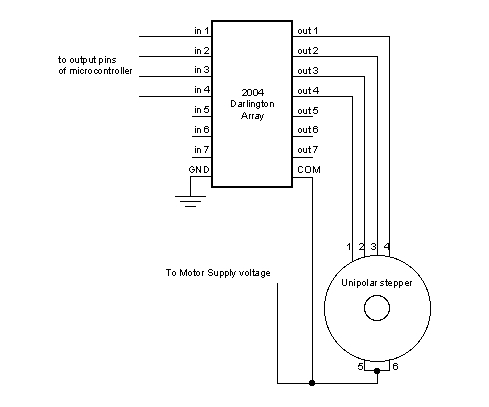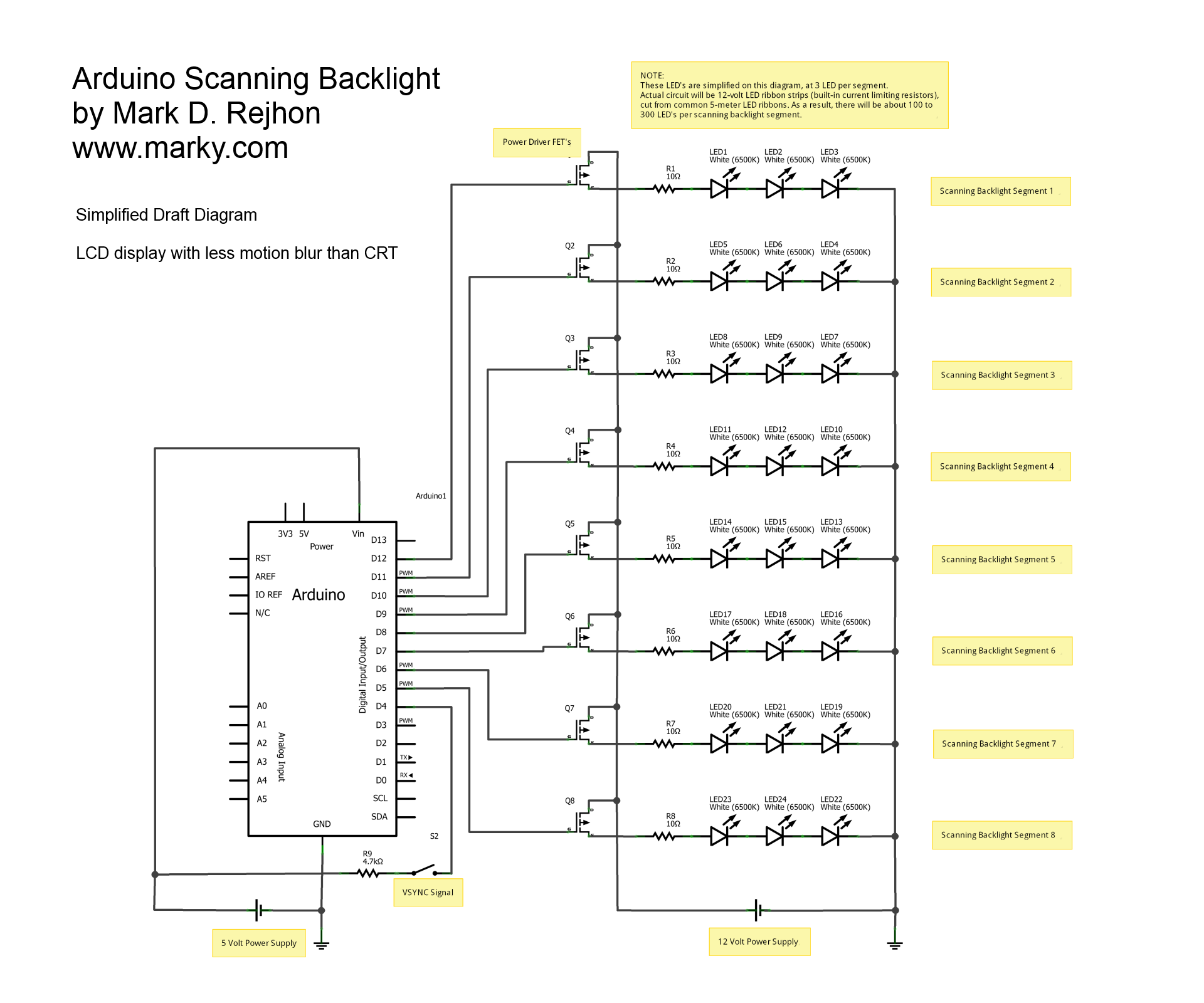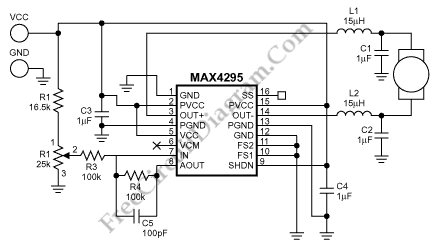
can rotate stepper motor
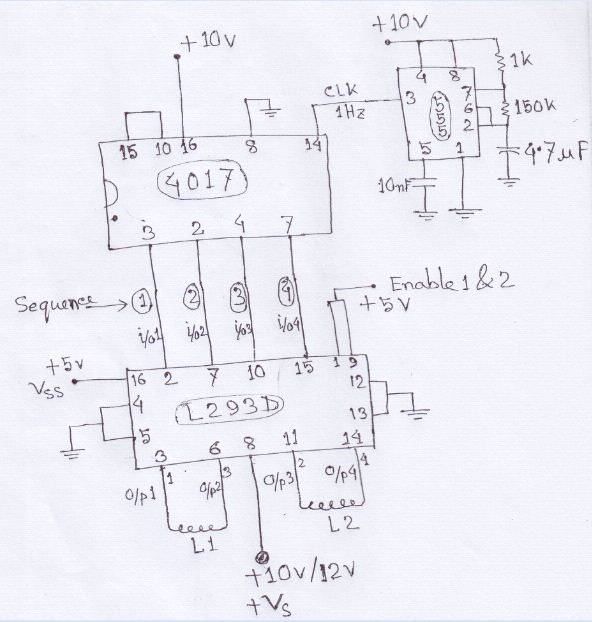
A stepper motor is to be rotated using a Johnson counter 4017 integrated circuit (IC). A bipolar stepper motor is utilized, with connections made from pins 3, 2, 4, and 7 of the 4017 IC following a specific sequence.
The circuit design involves using the 4017 decade counter, which is a popular choice for controlling stepper motors due to its ability to sequentially activate outputs based on clock pulses. The Johnson counter configuration allows for efficient management of the bipolar stepper motor's phases, enabling precise control over its rotation.
In this setup, the bipolar stepper motor typically has four phases, which correspond to the four output pins being used from the 4017 IC. The motor phases are energized in a specific order to achieve smooth rotation. The output sequence from the 4017 IC can be arranged to activate pins 3, 2, 4, and 7 in a cyclic manner, effectively stepping the motor through its phases.
To implement this, a clock signal must be provided to the 4017 IC, which can be generated using a 555 timer configured in astable mode or any other suitable clock source. Each pulse from the clock will advance the counter, activating the next output pin in the sequence. This sequential activation will energize the corresponding windings of the bipolar stepper motor, causing it to rotate.
It is essential to ensure that the current ratings of the outputs from the 4017 IC are compatible with the stepper motor driver circuit, as the 4017 itself may not be able to directly drive the motor. A transistor or a dedicated stepper motor driver IC may be required to interface between the 4017 outputs and the motor windings, allowing for higher current handling and protection of the 4017 IC.
Overall, this configuration provides an effective method for controlling a bipolar stepper motor using a Johnson counter 4017 IC, allowing for precise rotational control and the ability to easily adjust the speed and direction of the motor by modifying the clock frequency or the sequence of output activation.I want to rotate stepper motor using jonson counter 4017 IC. I also using bipolar stepper motor. I connected pin 3 2 4 7 (sequence) of 4017ic with.. 🔗 External reference
The circuit design involves using the 4017 decade counter, which is a popular choice for controlling stepper motors due to its ability to sequentially activate outputs based on clock pulses. The Johnson counter configuration allows for efficient management of the bipolar stepper motor's phases, enabling precise control over its rotation.
In this setup, the bipolar stepper motor typically has four phases, which correspond to the four output pins being used from the 4017 IC. The motor phases are energized in a specific order to achieve smooth rotation. The output sequence from the 4017 IC can be arranged to activate pins 3, 2, 4, and 7 in a cyclic manner, effectively stepping the motor through its phases.
To implement this, a clock signal must be provided to the 4017 IC, which can be generated using a 555 timer configured in astable mode or any other suitable clock source. Each pulse from the clock will advance the counter, activating the next output pin in the sequence. This sequential activation will energize the corresponding windings of the bipolar stepper motor, causing it to rotate.
It is essential to ensure that the current ratings of the outputs from the 4017 IC are compatible with the stepper motor driver circuit, as the 4017 itself may not be able to directly drive the motor. A transistor or a dedicated stepper motor driver IC may be required to interface between the 4017 outputs and the motor windings, allowing for higher current handling and protection of the 4017 IC.
Overall, this configuration provides an effective method for controlling a bipolar stepper motor using a Johnson counter 4017 IC, allowing for precise rotational control and the ability to easily adjust the speed and direction of the motor by modifying the clock frequency or the sequence of output activation.I want to rotate stepper motor using jonson counter 4017 IC. I also using bipolar stepper motor. I connected pin 3 2 4 7 (sequence) of 4017ic with.. 🔗 External reference
